Looking after your garden building |
||||||
 |
||||||
|
Timber is a beautiful, natural material that will provide you with many years of enjoyment outdoors. However, the weather does take its toll. You will need to look after your new garden feature to keep it looking its best. Regular health checks should allow you to nip any minor issues in the bud before they get the chance to develop into major problems. |
||||||
Sheds, workshops, summerhouses and log cabins |
||||||
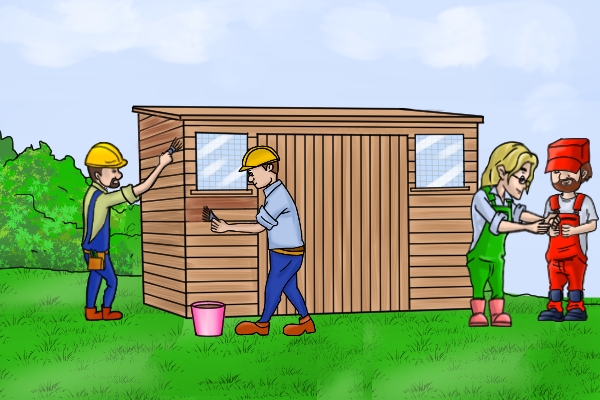 |
WallsWe recommend carrying out maintenance either in spring or early autumn, preferably during a period of moderate weather when it's not wet or windy. Check the walls of your garden building and nail down any loose boards, then repair or replace any parts that have been damaged. Stand inside the building and look all around for any signs of daylight. If light can penetrate, so can water. |
|||||
|
If ithe building is dip-treated, re-coat it annually using a good quality water-based preservative. This will stop warping and cracks, and enhance the colour of the timber. Carry out the work on a dry day. Test the state of the wood first by sprinkling it with a little water. If the water is absorbed immediately, the wood is ready for coating. However, if the droplets remain on the surface, it shows that the wood is too waterlogged to accept the treatment and needs time to dry out. To avoid warping, never apply wood preservative in hot weather. |
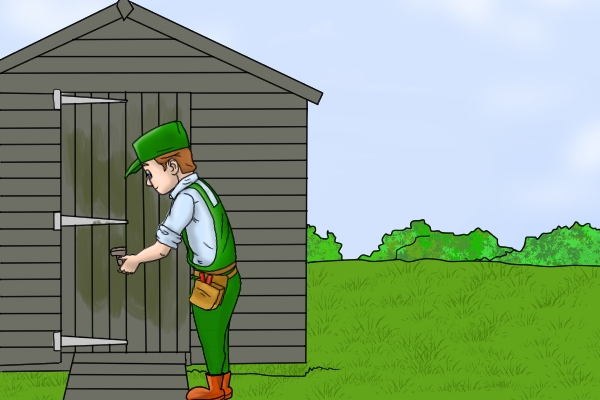 |
|||||
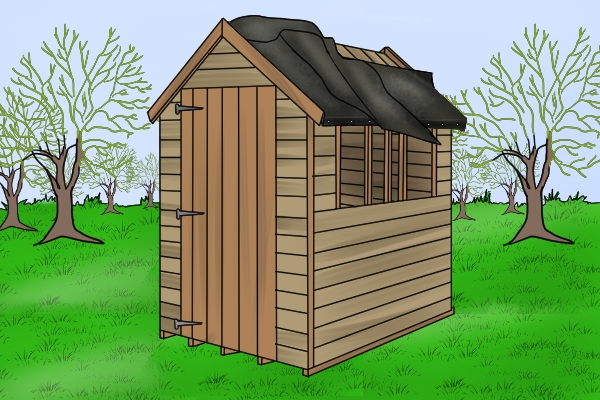 |
RoofRoofing felt and shingles are vital to keep the building waterproof, so make sure they do not become loose or damaged. If you find that the felt has become detached or ripped, you may need to either re-felt the whole roof, patch the damaged area or replace individual shingles. Don't forget to check the condition of the roofing panels underneath - you can do this from inside. An roof shouldn't need maintenance, but check for damage. |
|||||
|
Prune overhanging hedges, shrubs or trees regular intervals. Their branches are likely to make the building damp, and if they continually brush against the roof they could damage the felt and allow water to get in. Consider removing any trees growing too close to the shed, to prevent roots damaging its base. Check the barge boards for any indication of rot or woodworm, and renew them if necessary. |
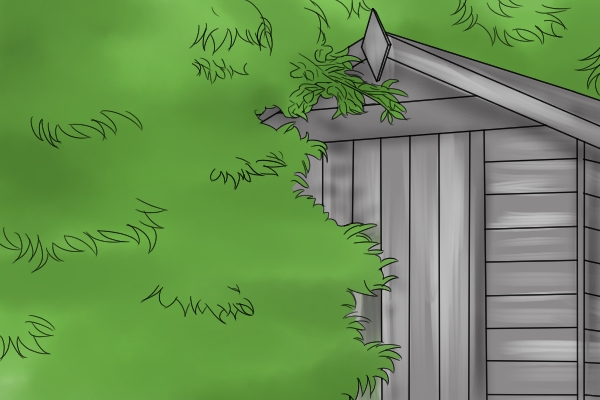 |
|||||
 |
WindowsKeep the windows squeaky clean using cold water with a little washing-up liquid. We do not recommend applying any solvents, as they could react with the acrylic panes and weaken them. To prevent corrosion, give a light coating of oil to any metal fastenings and hinges. |
|||||
|
If you notice any holes or cracks in the window seals, use a waterproof silicone sealant to repair the damage. It is important to ensure that all windows are completely sealed, both inside and out, to avoid water seepage. Inspect the state of the timber beading under each window and replace any sections that are damaged. |
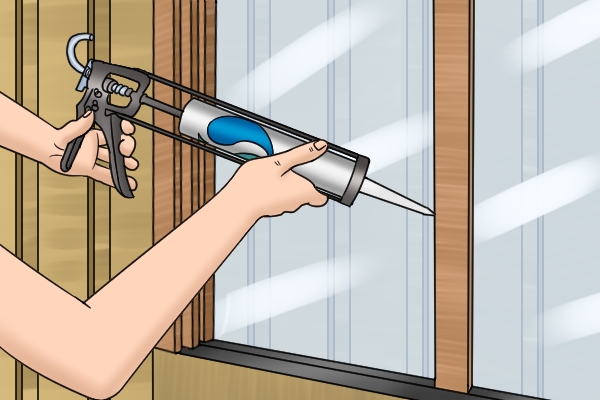 |
|||||
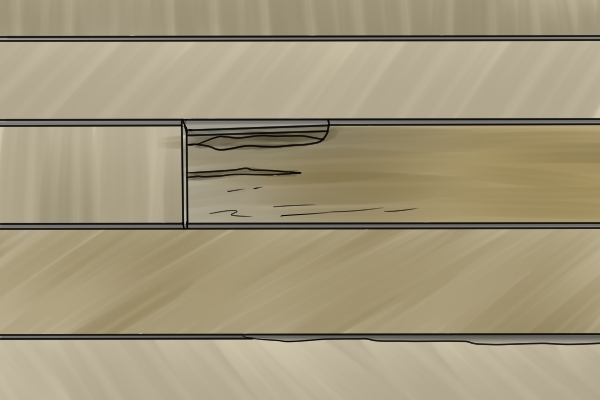 |
FloorCheck the condition of the floor at the beginning of autumn. If it consists of timber floorboards, you can change any damaged planks individually. However, if the floor is manufactured from chipboard or any other kind of particle board you might have to replace either the entire floor or a significant part of it, according to the size and design of your individual building. |
|||||
BaseMake sure the building remains on a level and firm footing. If it is standing on a timber base, sweep away any grass, leaves and other debris to ensure there is still plenty of space for air to circulate underneath the shed. The flow of air will help to keep damp at bay. Remove any pieces of rotting wood straight away to prevent it spreading to the rest of the shed. |
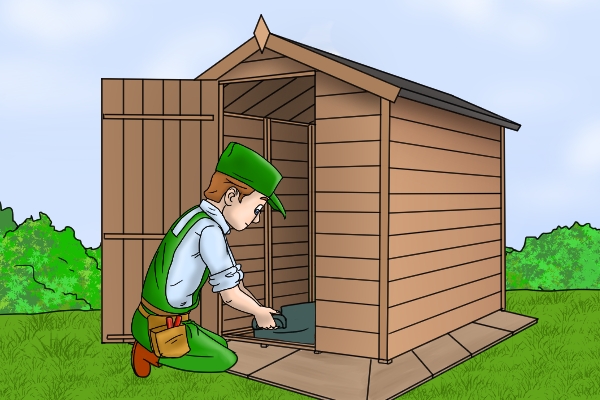 |
|||||
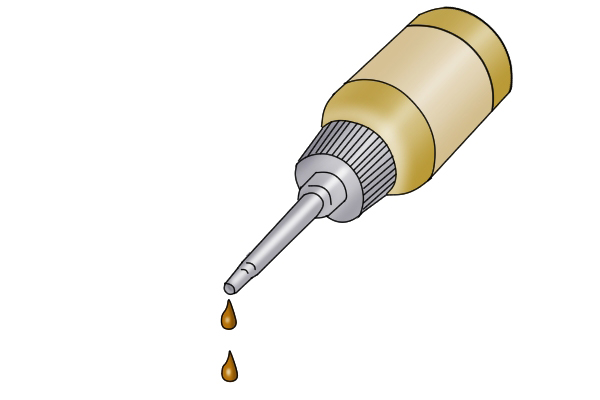 |
DoorLightly oil the door hinges and any handles, locks, hasps, bolts, window catches or other metal fastenings. If you notice any corrosion, scrape it off with some wire wool and brush on a coating of anti-rust paint. |
|||||
Garden structures and features |
||||||
|
Don't take your pergola, arch or log store for granted! They will last much longer with a little tender loving care. Every autumn, carry out a thorough inspection of all your arbours, fence panels, posts and pergola rafters. Make secure any loose connections, check brackets for rust and replace any weak or damaged components. Do the same for your garden tables and chairs. |
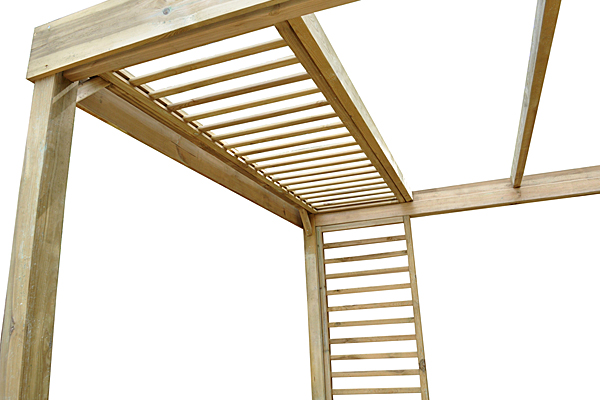 |
|||||
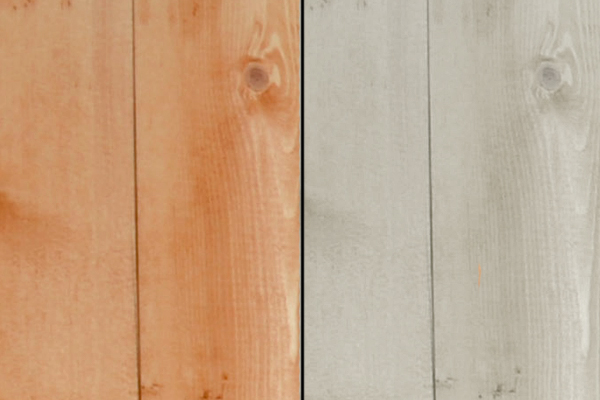 |
The golden brown colour of dip-treated garden products will fade gradually with exposure to sun, wind and rain. If you do nothing, the timber will eventually turn grey and the surface will roughen as the grain slowly opens up and begins to absorb water. You can avoid this by treating all surfaces with a good quality timber preservative within a year of purchase. This will serve to enrich the surface of the wood in the same way as a moisturiser, and will also prevent mould. |
|||||
Decking |
||||||
|
Decking is a major investment and requires regular maintenance to keep the surface attractive and in good condition. Every autumn clean your deck thoroughly with a hosepipe to remove any build-up of dirt, which can make the wood slippery. It's vital to wash off all surface debris before applying timber treatment. If water alone won't work, use a specialist deck cleansing product. Don't use chlorine-based bleach as this can break down the lignin cells which bind the wood together. |
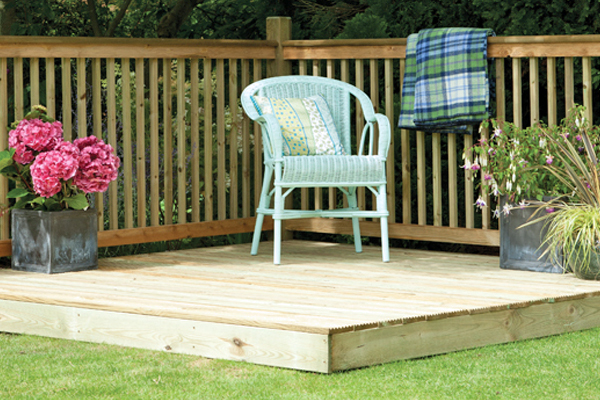 |
|||||
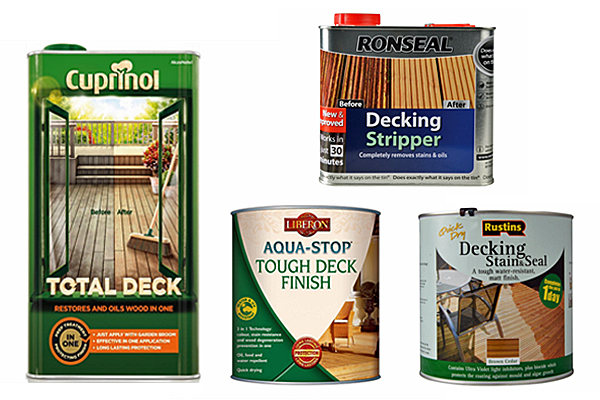 |
To change or brighten up the colour, leave the decking to dry completely then coat it with a specialist woodstain that is designed to cope with heavy pressure from foot traffic. If you can't decide between two colours, it's best to choose the lighter one. You always have the option to go over it with a darker oil later on, whereas a dark shade is almost impossible to lighten. Finally, apply some good quality decking oil to protect the wood. |
|||||







